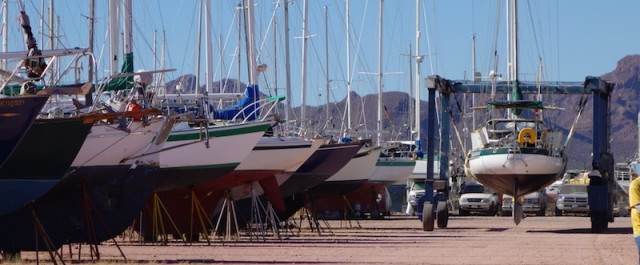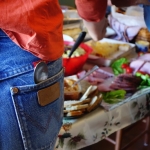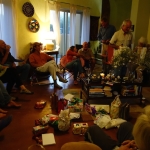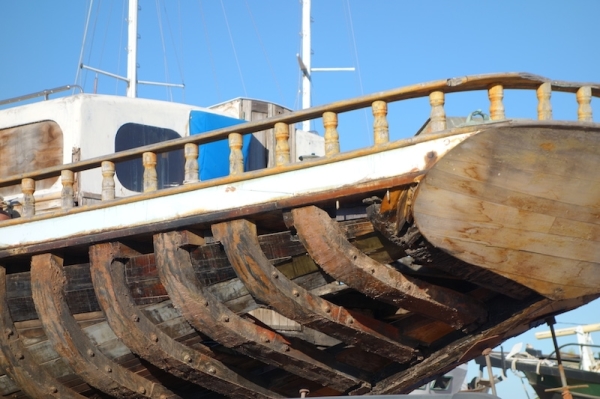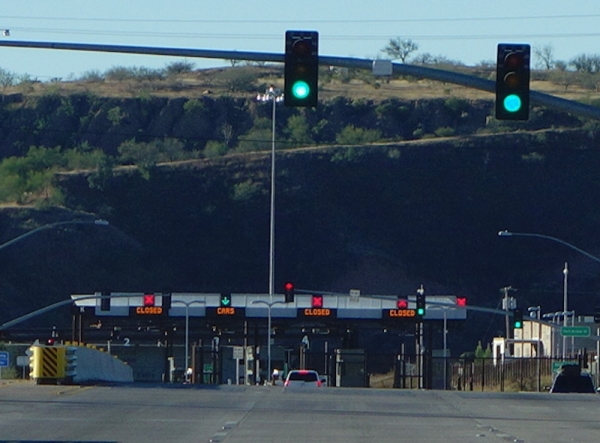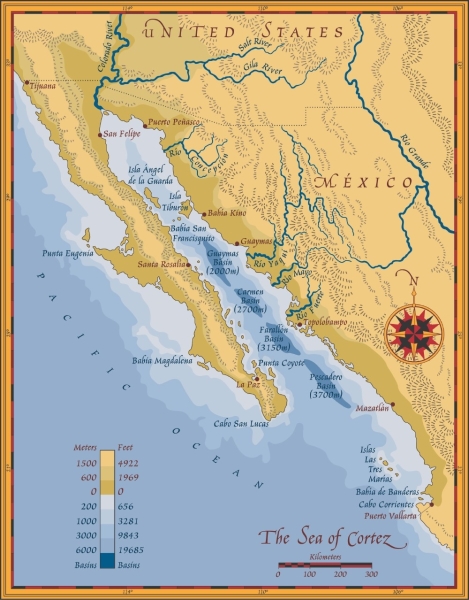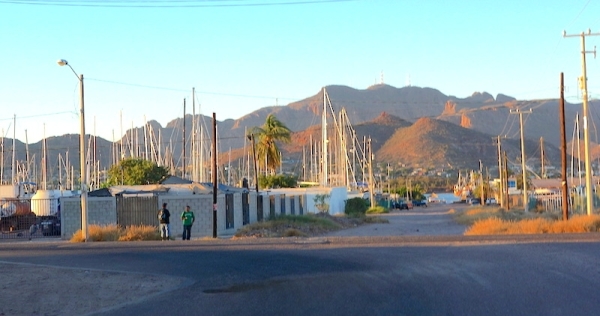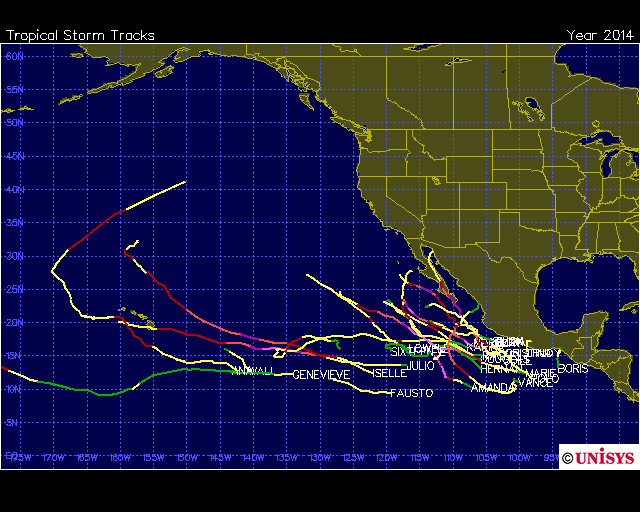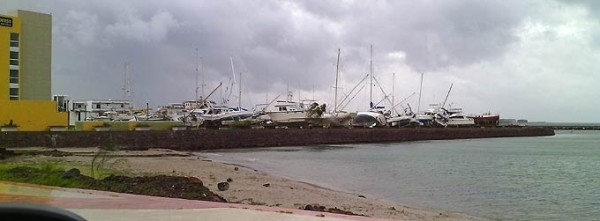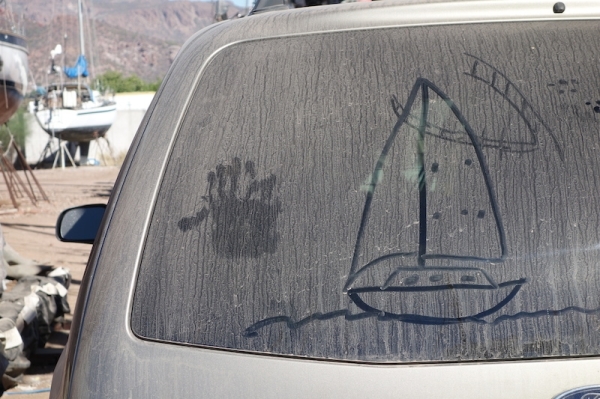Living on the hard, which is to say, on the boat while it is out of the water, is like a cross between a refugee camp and a trailer park, according to Doug. I think of it as a peculiar gated community, or maybe a half-way house, twixt life ashore and life afloat. Some of us get launched in a couple days, while others have been here for months, even years. We inmates can and do leave the premises from time to time but often remain quite near our cells, often at arm’s length.
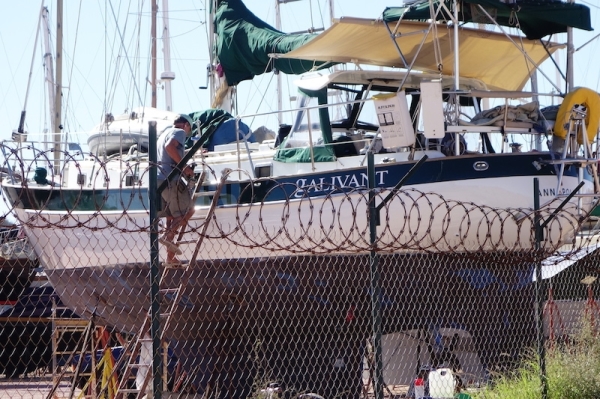
There are some issues related to our hovering home, mostly to do with plumbing. The nicer bathroom is 500 steps away, a five-minute walk, or a two-minute bike ride. Plan ahead! There are showers, and the hot water heater is turned on, hallelujah. In June, 104 degrees, you’d like to have a water cooler instead. Whatever the season, water conservation is mandatory, and the taps in the yard are turned off overnight.
For drinking and cooking water, we’re hauling 20-liter garafons up the ladder. Hector Manuel, the two-toot, blue cap water guy (as opposed to the siren water guy whose garafons have yellow caps) honks past daily. We wash up with the marina’s non-potable water, which we dispense to ourselves via a garden sprayer. The main advantage to peeing into a milk jug (via a folding funnel for those of us lacking extension tubing) is that there is no flushing required.
Watch, and you’ll see most everyone at some point in their day leaves the boat with a roll of toilet paper, a milk jug or a bucket. The genteel among us put the jugs and paper in bags, but if not: Don’t look at that jug. Especially don’t glance into the bucket. The lucky folks are the ones with the composting toilets aboard.
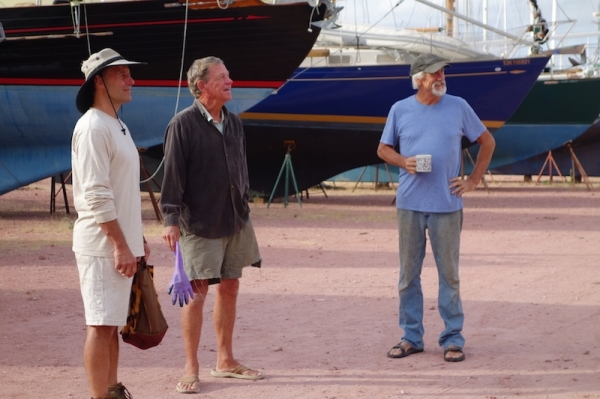
There is a goodly amount of opinion-sharing, information-exchange, and just plain bull-shooting. On the plus side, there is almost always someone with the tool, the experience, the address or directions, the microballoons, the software, the great idea, a few ounces of sympathy or a shred of information. The Boat-Yard Mind is a powerful thing, and so is its toolbox.
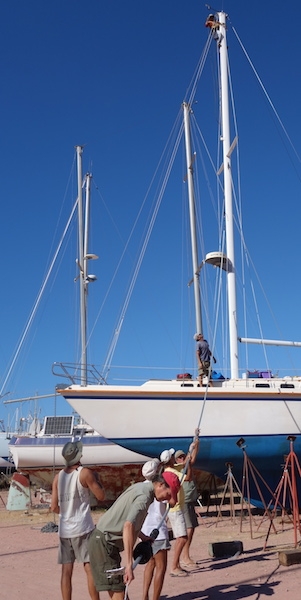
The social life is good
Pot luck dinners are the go-to event for every occasion. We’ve had birthday parties, pre-launch parties, Christmas and Thanksgiving of course, even a December 21 Solstice party.
We’re newbies to Mexico cruising, but one of the first things we’ve learned is that everybody brings their own chair to a gathering. There are no fallen palm trees around here, no driftwood, and apparently, not too many willing to stand up, except for the food line.
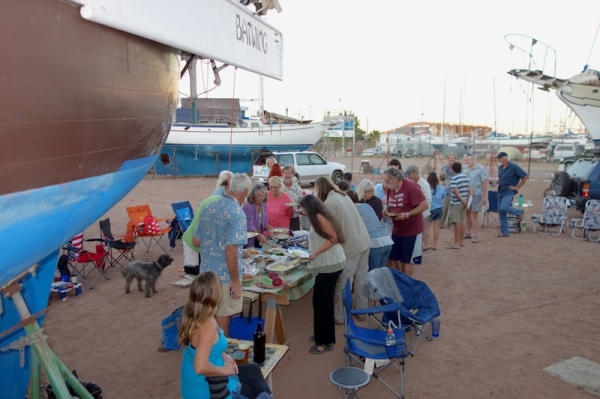
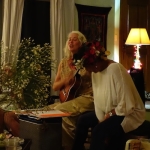
The Christmas pot luck dinner featured plates of good food and and a white elephant “under-50-pesos or something off the boat” gift exchange. The rules were a little complicated, but someone could chose the gift you already had rather than unwrap something unknown from the stack. The bottles of tequila and wine all made the rounds several times. We also had music from our resident troubador.
Goofing Off? Who, Me?
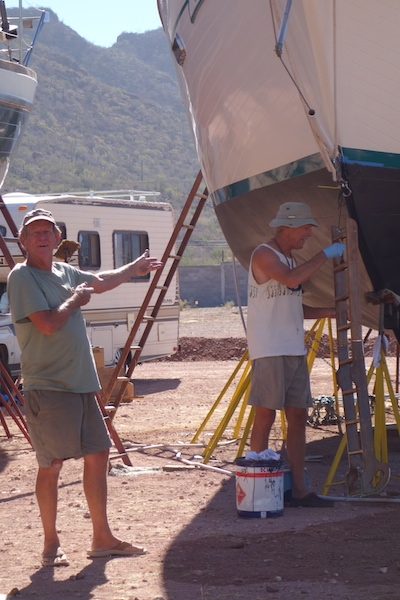
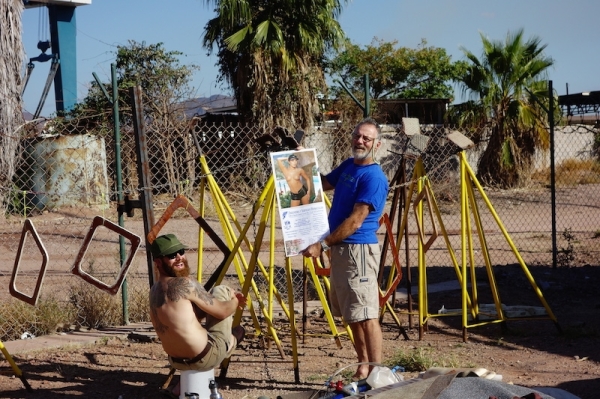
Problems worse than ours
There’s always someone with a bigger project or a worse set of problems than ours.
It’s a reminder that Marina Guaymas is a shipyard, not a fancy marina. We’re here to get ourselves ready to leave, not to loll about on beach chairs! But it really helps that the marina staff is friendly and helpful. “If you’re happy, I’m happy” says Arnulfo the yard manager, and he means it.
Sheep Eat Our Garbage!
In their own gated communities around our perimeter are a couple dozen sheep whose diets we are encouraged to supplement if we’d like to. There are some loose sheep in the other part of the yard too. Watch out for ‘Pinto’ the butting male! He’s a bruiser.
Their tails are down, their ears are big, so these are definitely sheep, despite their long legs.
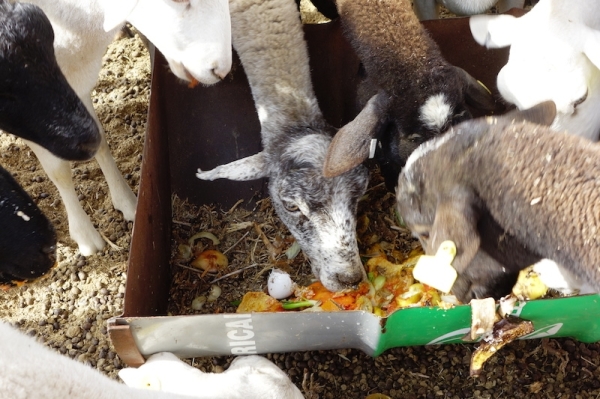
Every so often…
Someone escapes.
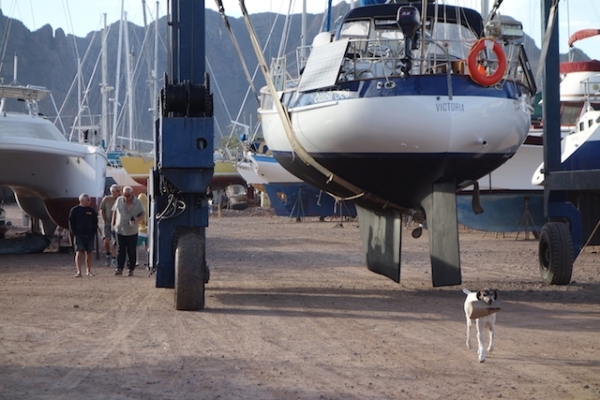
Best of all
We’ve made a lot of friends here. Maybe it’s due to adversity, or the common bonds of boatyard life, but really, it’s been a lot of fun.
One of the things we like best about cruising is that we get to spend time with people we wouldn’t have even met in our other life.
We Splashed!
We’re spending the first weekend of the New Year of 2015 in the water. The yard was fine, but I’m pretty sure we’ll be liking this floating stuff better. Un feliz, saludable y próspero año nuevo a todos.
